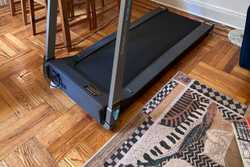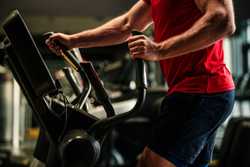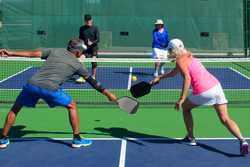The Best Kids’ Bikes You Can Buy Online Now, From Tots to Pre-Teens
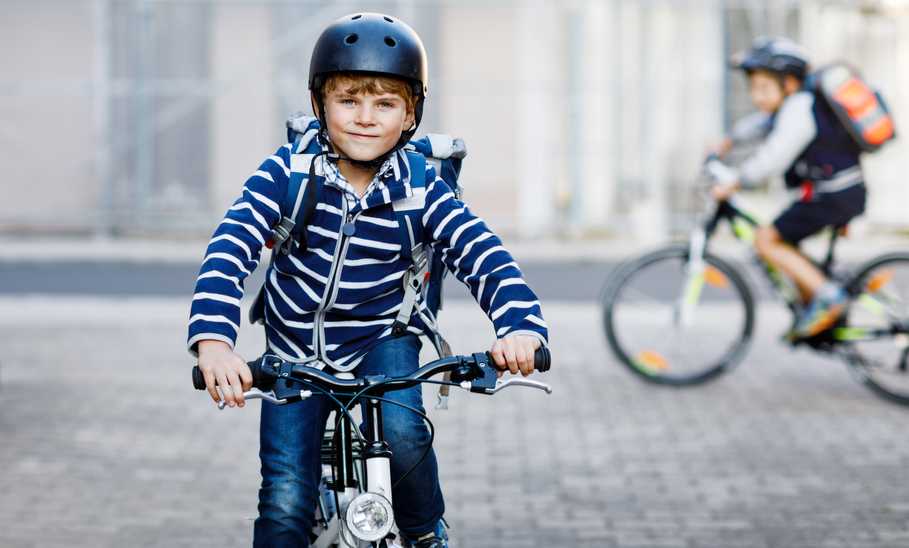
Our evaluations and opinions are not influenced by our advertising relationships, but we may earn a commission from our partners’ links. This content is created by TIME Stamped, under TIME’s direction and produced in accordance with TIME’s editorial guidelines and overseen by TIME’s editorial staff. Learn more about it.
Learning to ride a bike can be a right of passage for children when they move from babyhood to childhood, tricycle to bicycle, and the world stretches before them, one sidewalk at a time. Unfortunately, the road can be bumpy (literally and figuratively) so to ward off potential scrapes, bumps and breaks, it’s important to consider the best bike for your kid.
“It is very important that a bike fit the child riding it. Ensure proper bike fit by bringing the child along when shopping for a bike,” shares Ann Schroeppel, of Safe Kids Worldwide. “Select one that is the right size for the child, not one they will grow into.”
Of course, figuring out the best fit for your kid may feel overwhelming because so many types and brands are on the market. To help, we’ve rounded up some of the best kids’ bikes for multiple terrains and purposes, so they can safely travel from the mountains to the playground, and everywhere in between.

The OG of balance bikes, Strider balance bikes remain popular for parents and kids. No training wheels here, just simple geometrics that allow your child to balance themselves and practice being comfortable on two wheels. The Strider Sport can accommodate a wide range of sizes and ages (from 18 months up to four years).
Adjustable height handlebars, seating (11″ to 19″ on a Strider Sport model), and a lightweight frame make this no-pedal bike a great option for conquering balance before making the leap to a full-on pedal bike.
When your kid graduates from a balance bike, a good one to pick up next is a Frog 40 starter bike. This lightweight and colorful option has wide tires and a 15-inch inseam, making it a comfortable ride for a younger child (3 to 4 years) or a smaller 5- or 6-year-old.
A 16-inch Koda bike – $119.99 from online retailer Retrospec – is another great starter set of wheels for those kids who need a step up from a balance bike.
![[object Object] [object Object]](https://guardianbikes.com/cdn/shop/files/GBE-20-1-BG_f4030128-ede5-49df-b352-e4102fe0f647_1920x.jpg)
Guardian makes a 20-inch Small Kids Bike for kids sized 43” to 51” tall. These lightweight frame bikes are easy to handle, with adjustable seats, easy-to-reach handle brakes (as opposed to coaster brakes on pedals) and a low crossbar so your child can get on and off their seat with no trouble. This bike has 541 reviews and 4.9 stars on Guardian’s site, with parents expressing great satisfaction, especially with the hand brakes, making it easy for the kids to stop. If your child loves this bike, Guardian sizes up to 14 years.
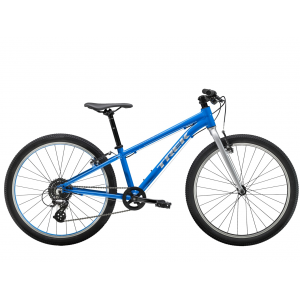
Trek multi-terrain bikes are a great investment for kids who love to ride, being comfortable and lightweight hybrid bikes. The Wahoo 24 is a popular model for this age range and comes in various colors.
![[object Object] [object Object]](https://mediahub.woom.com/cdn-cgi/image/w=2048,f=avif/m/85abad97c136468/3to2-woom6_perspective_product.jpg)
Woom bikes like the Woom 6 are another great lightweight choice for this age range (among others) because of the eight-speed gear system, comfortable seat and child-specific geometry.
When shopping on a budget, visiting your local bike store is a great place to look for affordable trade-up programs and rehabbed bikes. While buying used bikes can be a crapshoot, you may find a good deal. Whenever buying a budget or used bike, McComb recommends bringing it to your local bike store for a check-over to make sure everything is working as it should.
![[object Object] [object Object]](https://assets.specialized.com/i/specialized/96522-70_RIPROCK-20_FDSQ?bg=rgb(241,241,241)&w=1600&h=900&fmt=auto)
Bike company Specialized Riprock 20 is among the best mountain bikes for kids who like to travel tough terrain. This mountain bike was upgraded in 2022, and users report a better overall shredding experience for their young riders around five to eight years of age.
One parent we spoke to purchased a Rockhopper, not specifically designed for children, because the Riprock was too small. So if you like the Riprock, your child could continue to grow into other Specialized mountain bikes.
BMX bikes came of age in the 1960s and are great for racing and tricks. They are heavier than most 20” bikes and not usually great for long-distance cycling, but if your kid is a BMX fan, there are options out there.
![[object Object] [object Object]](https://us.sourcebmx.com/cdn/shop/products/1d97150b-93d6-4e72-92f8-049a3b465a05_1080x.jpg)
Another recommended BMX bike for older kids between five to six feet tall is the Sunday Primer, which weighs 25 lbs with 20” tires. Built specifically for BMX around a pro-level geometry, the bike has a high-quality build to provide safety to young BMX riders.
With its durable frame, the Mongoose Legion L18 is a good choice for beginner BMX riders whose height is between 3’.8” and 4’8”. It’s heavy, weighing 28 lbs, according to its website, so make sure your child can handle the heft
![[object Object] [object Object]](https://media.trekbikes.com/image/upload/f_auto,fl_progressive:semi,q_auto,w_1920,h_1440,c_pad/Precaliber248speedSuspensionBoys_20_28589_B_Primary)
Many bikes for kids are hybrid, meaning they have flat handlebars but no mountain bike-like suspension fork. Lightweight and easy to handle on both city streets and gravel bike paths, there are many options for kids in this area, including Trek's Precaliber 24-inch 8-Speed Bike for 8-to-12-year olds, with a 24” padded seat for comfort.
![[object Object] [object Object]](https://mikesbikes.com/cdn/shop/products/OwlSingle-red-01_1080x.jpg?v=1632853894)
Cleary bikes are another hybrid winner with parents, for selling an all purpose, high quality bike for kids. These bikes are lightweight and designed specially for children, from toddlers to preteens. Parents cited the Owl and Meerkat as particular favorites from Cleary.
.
![[object Object] [object Object]](https://mikesbikes.com/cdn/shop/products/MY21ATX27-5_ColorBVibrantBlue_1800x1800.jpg?v=1631741756)
For bigger kids that are getting too tall for a standard kids’ bike, there are some great and affordable mountain bike options from Giant, like the ATX, that fit riders as small as 4'8. Some bikes for bigger kids are simply adult bikes in extra-small sizes.
For kids that are going to be doing more on-road, or light bike path use, we love the Sirrus X 2.0, which also goes down to about 4'8 in an XXS, or the Trek FX1 XS or S which can fit riders as small as about 4'10 in an XS.
![[object Object] [object Object]](https://assets.specialized.com/i/specialized/90922-81_SIRRUS-20-WHTMTN-LMSTN-BLKREFL_HERO?bg=rgb(241,241,241)&w=1600&h=900&fmt=auto)
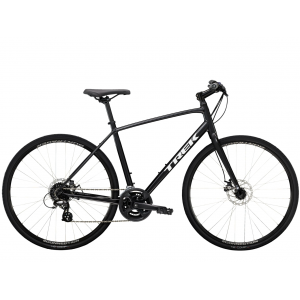
Note: By the time your teen wants a new bike, chances are, they may need an extra small adult size, according to McComb. Some well-known bikes, like Trek, also sell extra small adult sizes, so your teen can see where they fit on the spectrum of inseam (how you measure for a kid’s bike) sizing. The bikes listed above would likely fit a smaller teen.
Picking a bike is usually a personal choice, based on factors like type, color, make, and model, plus the fit and age of your kid. Bikes are expensive, but safety is a major concern for most parents when choosing one.
We spoke to kids and their parents, bike sellers, and safety experts to learn more about all the many bikes out there on the market. We focused on bikes that are known for safety features and comfort for children, and we narrowed down our focus to the under 13 years of age contingent.
Your child’s age, height and experience are some things to consider when bike shopping. For example, your two-year-old will need a much different bike than your 12-year-old. “Some kids don't understand the pedaling motion until they're 4 or 5 years old,” says Libby McComb of Bicycle Habitat in NYC and Brooklyn, NY.
Your child’s bike should have a sturdy frame, a reliable braking system, plus reflectors and lights for visibility at night. Depending on your child’s abilities and/or the type of bike they’re riding, they may want knee and elbow pads and even riding gloves. No matter the rider’s age, a protective helmet is always necessary when riding a bike.
Properly-fitted helmets can reduce the risk of head injuries by at least 45%, per Schroeppel, yet less than half of children 14 and under usually wear a bike helmet. It’s the best way to prevent head injuries and death, according to research by SafeKids.org, so make sure your child has the right size helmet and wears it whenever riding. “Your child’s helmet should meet the U.S. Consumer Product Safety Commission standards,” says Schroeppel. “When it is time to buy a new helmet, let your children pick out their own because they will be more likely to wear them for every ride.”
Even if you don’t buy your bike locally, visiting your local bike shop for advice is worth it. And, if you can, shopping locally can be a great way to ensure you can easily go back with questions about fitting for a bike.
How a bike fits your child is essential for safety. A bike that is too large or too small for your child will impact their ability to safely handle it. If a child’s feet are straining to reach the pedals, they can’t ride the bike. Likewise, if your child’s feet are dragging below them, on the ground.
Your child’s ability and, in some cases, agility are two factors to consider when purchasing a bicycle. “Once they get the hang of balancing, adding pedals into the mix is easy,” shares McComb.
Yes. Like any vehicle, it’s always wise to have your child try out a bike before you buy it. “It's important to think about fit, but also about what kind of riding they're going to be doing and their confidence level,” says McComb. “If your child is already comfortable on a bike, you can go with something they’re just on the cusp of being big enough to fit on, size-wise, but if they're just learning, a slightly smaller bike is easier to manage.”
It depends on who you ask, but most electric bikes are not designed for kids. “We would not recommend electric bikes for most kids. Most have manufacturer warnings about being intended for adult use only,” says McComb. “They are often heavy and can be operated at higher speeds some riders are not ready for.”
Ask your seller about their return policy on bikes, as well as whether they offer a warranty period.
Absolutely. Ask your friends and colleagues about the bikes that worked for their kids and ask why they chose a particular make and model. Go a step further, and ask if your children can try out the bikes, too.
Ask your kids why they want one and how they will use it, suggests McComb. “Do they love biking? Do they want to go mountain biking? Do they want to do a bike tour? Ride to school? Think about how long they might have this bike for and how their use might change in that time,” she suggests. A kid who wants to spend weekends on the bike path but also wants to ride to school will need a hybrid model versus a mountain bike, for example.
Balance, dirt, mountain, hybrid, and BMX are just a few types of bikes that are available for kids.
There are many great companies making kids’ bikes, so buying one online has never been easier. Going to your local bike shop is a great one-stop shop where you can try out bikes and get advice tailored to your child before you buy one.
Electric bikes for kids are a no, according to most bike experts. “I would say some pedal-assist (no throttle) class 1 e-bikes that are limited to less than 20mph are okay for older, adult-sized teens that are already very, very comfortable cyclists with excellent bike-handling skills, who can be trusted to operate them safely, but always wear a helmet and obey the rules of the road,” shares McComb.
Every child is different, and the age they start riding bikes depends on their development, says McComb. “Some kids don't take to a balance bike right away and prefer a bike with training wheels,” she says. Balance bikes can be for 18-month-olds and there are mountain bikes designed for as young as five years. However, when it comes to safety issues, age does matter.
“It can be hard for kids to judge speed and distance of cars until age 10, so limit riding to sidewalks (although be careful of vehicles in driveways), parks, or bike paths until age 10. No matter where you ride, teach your child to stay alert and watch for cars and trucks,” Schroeppel adds.
When measuring for kids’ bikes, you measure the child’s inseam. So, you need to consider the height (not the age) of the rider as well as the size of the wheels. For example, a 20” kid bike would usually suit a six or seven-year-old and a bike for an 11-year-old will usually have bigger, 26” wheels.
The best bike for a five-year-old will depend on the child. Some may still need a balance bike, and others will be ready for a bike with training wheels. In many cases, an experienced rider at five years can handle whatever bike fits them.
There isn’t a specific age for kids and gears, but most bikes designed for seven or eight-year olds offer some gear options.
The information presented here is created by TIME Stamped and overseen by TIME editorial staff. To learn more, see our About Us page.

